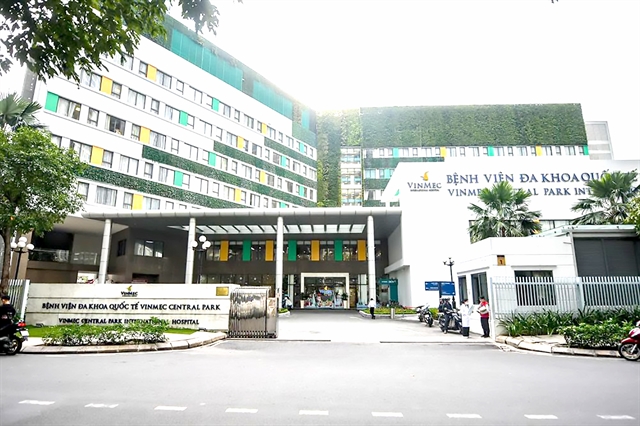Private hospitals in Việt Nam are actively seeking expansion to tap into the growing healthcare market. However, not all private hospitals are experiencing profitability.

Private hospitals are seeking to expand quickly to tap into the growing healthcare market though not all are profitable.
According to the Việt Nam Private Hospital Association, by the end of 2022 the country will have nearly 320 private hospitals with 22,000 beds or a fifth of all hospitals and 8 per cent of beds. There are also 38,000 private clinics.
The non-public medical market is considered to be lucrative for investors due to the rapid growth of the middle class in Southeast Asia and increasing spending on healthcare.
Nevertheless, not all participants are finding it uniformly profitable.
Only two private hospitals, Tâm Đức Heart Hospital and Thái Nguyên International Hospital Joint Stock Company, publicly disclose their financial performance since they are listed on the stock market.
Thái Nguyên, established in 2013, has since increased its charter capital from VNĐ27.7 billion (US$1.1 million) to VNĐ518 billion.
It operates the Thái Nguyên International Hospital and Yên Bình Thái Nguyên General Hospital with a total of 550 beds, and is the largest private healthcare provider in the mountainous provinces of the north-east.
Its average annual revenues were around VNĐ270 billion from 2015 to 2019. But they rose significantly after it expanded in 2020, and are on course to reach a record VNĐ415 billion in 2023.
It next plans to build a hospital in Bắc Giang with 300 beds and another in Hà Nội with 500.
Tâm Đức Heart Hospital Joint Stock Company, which opened in 2006 with 250 beds, achieved revenues of over VNĐ723 billion and pre-tax profits of nearly VNĐ104 billion in 2022.
In the first nine months of 2023, for which results are available, it had net revenues of VNĐ553 billion, a 4 per cent increase year-on-year, and pre-tax profits of VNĐ73 billion.
However, many other private hospitals are struggling to generate significant profits or are even losing money.
Vinmec International General Hospital, part of conglomerate Vingroup, is one of the leading private hospital networks in terms of revenues. It has 10 hospitals and clinics with 1,650 beds.
It saw a 50 per cent increase in the number of patient visits in 2022, but remained mired in losses despite a 53 per cent revenue growth to VNĐ4.48 trillion.
Its pre-tax loss in 2022 topped VNĐ700 billion.
Hoàn Mỹ Medical Group, Việt Nam’s largest private healthcare network with 14 hospitals and six clinics, is providing comprehensive services across its Hạnh Phúc and Hoàn Mỹ brands.
The Tâm Anh General Hospital chain belonging to medical and pharmaceutical entrepreneur Ngô Chí Dũng (the person behind the VNVC and Eco Pharma brands) makes negligible profits despite earning revenues of hundreds of billions of đồng.
In 2019 and 2020 the private hospital chain reported after-tax profits of VNĐ1.14 billion and VNĐ380 million on revenues of VNĐ660 billion and VNĐ745 billion.
Tâm Anh was established in 2007 but only began operations in 2016. It has one hospital each in Long Biên District in Hà Nội and District 2 in HCM City.
In July 2023 Thomson Medical Group paid US$381.4 million to acquire Far East Vietnam Medical Company Limited, owner of FV Hospital, making it the largest M&A deal in Southeast Asia in the healthcare sector since 2020.
FV was founded by Dr. Jean-Marcel Guillon in 2003 with a group of French doctors and registered capital of $44 million.
By last year it had nearly 200 beds and more than 30 specialities, and was capable of treating 1,500 patients per day.
According to Thomson Medical Group, FV made a profit of $19.5 million in 2022.
In 2019-22 it achieved annual revenue growth of 8.2 per cent and profit growth of 14.8 per cent. — VNS





